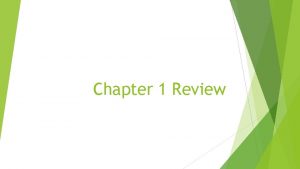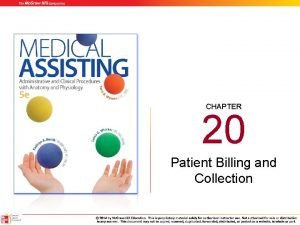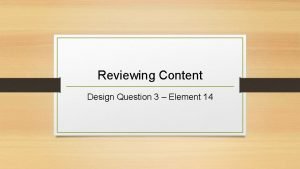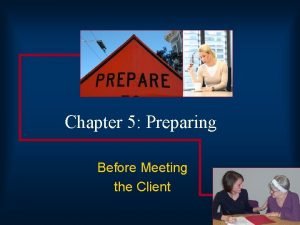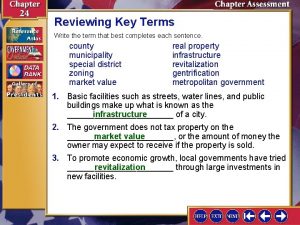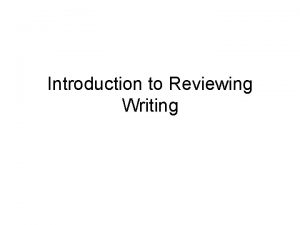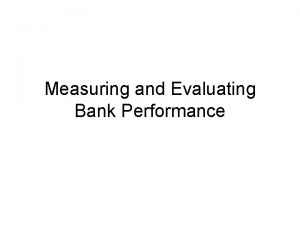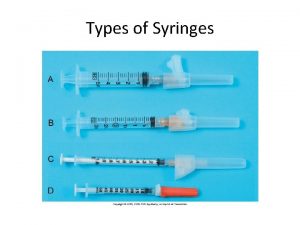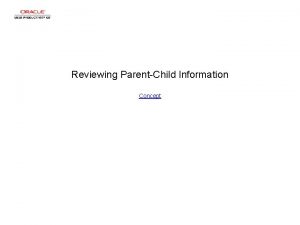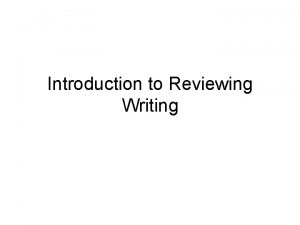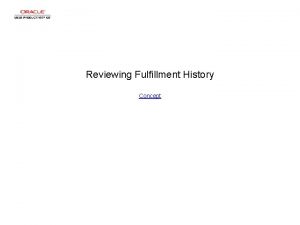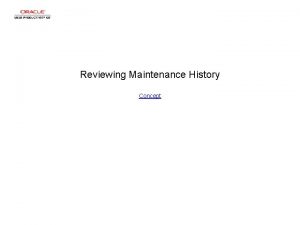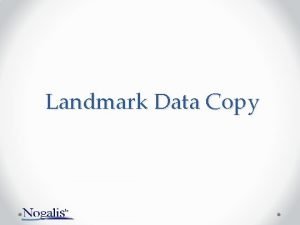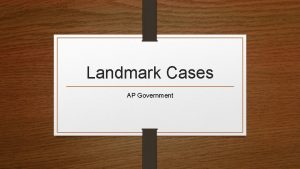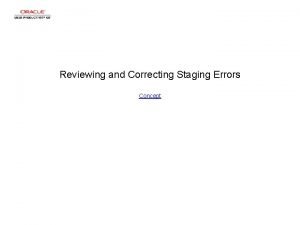Measuring and Reviewing Performance Jason Warren 3 Landmark














- Slides: 14

Measuring and Reviewing Performance Jason Warren 3 Landmark Court, Leeds, LS 11 8 JT T: +44 (0) 1133 852 740 W: www. wearecallidus. com

Agenda • HSG 65 and OHSAS 18001 • Plan Do Check and Act • Why do we measure performance • The difference between audits and inspection • What should I audit • How do I audit • What about the findings of the audit • Good starting points Page 2

HSG 65 and OHSAS 18001 • Standards for the implementation of H&S Management • High degree of similarity in their content • • • Identify the issues Set the standards Plan what needs to be done Organise who is going to do it Equip them to do so Do it Check it has been done Check that it worked Learn from the feedback to continually improve Page 3

• Management Control Loop • HSG 65 • • Plan Do Check Act Page 4

Why do we measure performance • To ensure that you are managing the risks • To give you confidence that you are doing enough • To identify what you can do better • To show you care about H&S • To promote a H&S culture Page 5

The difference between audits and Inspection • Broad goals: Both strive for a safer workplace that complies with all regulations and standards. • Safety checklists: Both may use a safety checklist that includes relevant standards, best practices, and other recommended precautions. • Inspection: A safety inspection looks for safety hazards and unsafe practices throughout a facility. Often closed questions requiring Yes/No answers. Usually performed by those familiar with the workplace • Audits: A safety audit evaluates safety programs and practices within an organization. Usually performed by an independent person from outside the company or maybe another department. Page 6

The difference between audits and inspections • Inspections • • More regular than audits Checklist driven (Yes/No with brief comments) Determine whether safeguards are in place Examine whether the equipment presents any hazards Gather air, water, and other samples to test for hazardous substances Observe work practices to identify unsafe actions Conditions that present a hazard are to be corrected or controlled immediately Page 7

The difference between audits and inspections • Audits • Higher level (processes, roles and responsibilities, training provision, etc. ) • Measure and collect information about a safety program’s reliability and effectiveness • Look at whether a safety program meets the company’s stated goals • Examine safety training • Active (routine) and reactive audits (e. g. accident investigation) • Shortfalls may take longer to implement such as • A change to documented procedures • Amendment to a training regime or • Change in safety culture (Everyone involved) Page 8

What should I audit • Auditing the high-level • Breakdown the audit into manageable chunks • • • Policy Arrangements Roles and Responsibilities Risk Assessment Safe Systems of Work Health Surveillance Training and Competence of Workforce Effectiveness of Management and Supervision Enforcement Performance Monitoring Communication - Consultation and Involvement with the Workforce Accident Investigation – Promote Workforce to Report Near Misses Page 9

How do I audit • Have a clear understanding of what you are going to audit • Have the right equipment • Talk to people – Involve them in the audit • Give enough time and effort • Don’t just carry out an inspection • Try and establish the root causes of what is going wrong • Put in place realistic and affordable improvements • Tell the decision makers about your findings Page 10

What about the findings of the audit • Gather feedback and learn lessons from what hasn’t gone so well • Consider realistic additional controls • Amend processes and procedures • Implement additional training • Provide additional supervision • Enforcement of policies (wearing PPE, following procedures, discouraging horseplay) • Discipline those that ignore the processes Page 11

What about the findings of the audit • Remember that this is a cycle of events. • If the policies, procedures and control measures have changed then these will need to be reviewed to ensure they have achieved the desired results. Page 12

Good starting points • HSG 65 identifies resources in Part 4 • • Leading for health and safety Management systems Attitudes and behaviours Measuring and reviewing performance Worker consultation and involvement Competence Specialist advice and other organisations that can help Process Safety Page 13

Questions Page 14
 Reviewing concepts and vocabulary chapter 1
Reviewing concepts and vocabulary chapter 1 Business communication chapter 6
Business communication chapter 6 The process of classifying and reviewing past due accounts
The process of classifying and reviewing past due accounts Reviewing key concepts: flatworms, annelids, and roundworms
Reviewing key concepts: flatworms, annelids, and roundworms Chloroplast and mitochondria similarities
Chloroplast and mitochondria similarities Examples of economic protest parties
Examples of economic protest parties Reviewing content marzano
Reviewing content marzano Preparing for a client meeting
Preparing for a client meeting Reviewing key concepts reproductive barriers
Reviewing key concepts reproductive barriers Reviewing key terms
Reviewing key terms Febabook
Febabook Communism capitalism venn diagram
Communism capitalism venn diagram What is reviewing
What is reviewing Evaluating bank performance
Evaluating bank performance Parts of injection syringe
Parts of injection syringe
